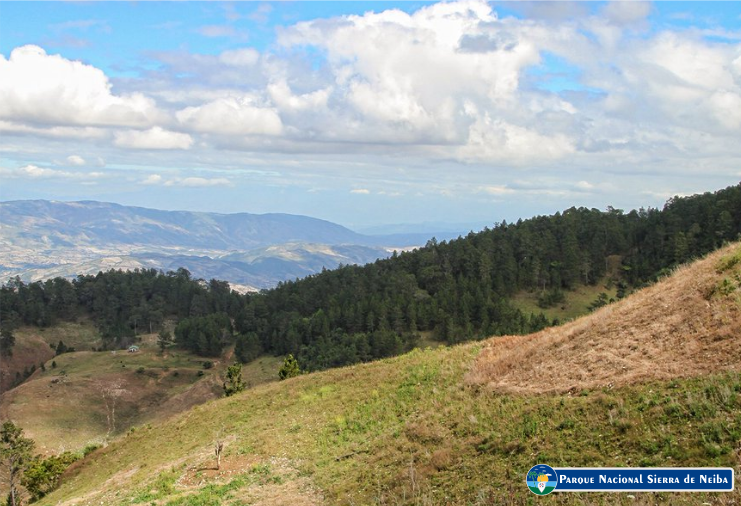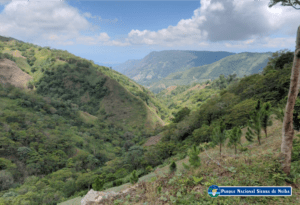
The Sierra de Neiba National Park is a wonderful paradise, with an area of approximately 278 km², it was created by decree 221 of September 30, 1995, confirmed by laws 64-00 on the Environment and Natural Resources and 202-04 on protected areas, it is a mountainous formation located in the Bahoruco, Independencia, Elías Piña and San Juan provinces of the Dominican Republic. The mountain range is about 100 km long, from northwest to southeast. Its profile is very steep, its slopes have maximum slopes of 40%. Pineapple.
The Sierra de Neyba National Park integrates an extensive chain of mountains up to 2,176 meters high, divided in its central part by an area of deep valleys, terraces and fault lines that are very difficult to access. The slopes in most of the mountain range are very pronounced, most of them exceeding 40% incline. The geological formation is made up mostly of Tertiary limestone rocks, so there are few surface rivers due to rapid infiltration of the waters.
Shifting agriculture occupies an area of almost 40% of the surface; Extensive agriculture only exists in some intramontane valleys, as is the case of the Los Pinos del Edén valley. Cloudy and humid forests are found mainly on the ground, while semi-humid forests are located at heights below the shifting cultivation belt. Barely 1% of the total area is occupied by pine forests.

Dry forests have an extension of 26% of the total. A peculiarity of the dry forest in the Sierra de Neyba is the existence of the so-called “areas of scarce vegetation”, located on the lower slopes of the southern slope. In this part, the vegetation is poorly developed due to the great inclination, the exposure to the south and the low abundance of soil.
The main extensions of semi-humid forest in the Sierra de Neyba are located on the southern slope, to the southwest of Los Pinos del Edén, which are in a slightly altered state. It is possibly one of the places in the country with the largest amount of mahogany (Swietenia mahagoni), which is why decree 221-95 had defined Las Caobas as a Natural Monument.
Evergreen broadleaf forests grow in the highest part of the sierra. Within these are the cloud forests, which occupy the places where the clouds collide with the trees, and the moist forests that remain at lower elevations. In the Sierra de Neyba there are only very narrow strips left on the ground and small spots on the slopes. The composition of the humid forests is mainly represented by Cupania americana, Picramnia pentandra, Alchornea latifolia and copey (Clusia rosea), among others.
The cloud forest is mainly made up of the palo de viento (Didymopanax tremulus), tachuela (Podocarpus aristulatus), palo de cotorra (Brunellia comocladifolia), maroon violet (Turpinia picardae), among others.
In the Sierra de Neiba the diversity of animal species seems to be lower than in the Sierra de Bahoruco. The amphibians reported for this area are 11, all endemic to the island, with the humid and cloudy forests being the main habitats due to their humidity requirements. Reported reptiles are 39 species, of which more than 98% are endemic to the island. Only two endemic amphibians are known from the Sierra de Neyba, which correspond to two small frogs (Eleutherodactylus notitode and E. parabates) and one species of lizard (Anolis placidus).
The total number of birds reported for the Sierra de Neiba is 85 species, of which 17 are endemic to the island. As in the Sierra de Bahoruco, the mammal species of greatest interest that can be found are those endemic to Hispaniola: the hutia (Plagiodontia aedium) and the solenodonts (Solenodon paradoxus and S. marcanoi, the latter possibly extinct).
To find out about other interesting places in the Dominican Republic, follow us at visitadominicana.com
How to get to Sierra de Neiba National Park: CLICK HERE!
